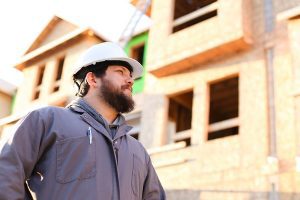Many builders are shying away from starter homes, thanks to a variety of factors that make them less profitable. Still, high demand for these properties makes them a sound investment in certain instances. Keep reading to determine if you should consider building more starter homes.
Plummeting Inventory Is a Problem
Since 2008, housing inventory has been scarce. Limited availability has pushed starter home prices upward. Starter homes have become increasingly unaffordable in a few popular markets, including Tacoma, San Diego, San Francisco, Sacramento, Portland, Miami, Los Angeles, and Denver. While America is experiencing a housing shortage at all income levels, starter homes are especially scarce, leaving many first-time buyers sitting on the sidelines despite an apparent will to buy.
Why Aren’t Builders Making More Starter Homes?
Despite the large demand for starter homes, many home builders are reluctant to build them. This is due to a number of reasons, including:
- High land costs: According to BUILDER Online, during the first part of the housing recovery, many lots have been of “A” quality, with very little attention devoted to B, C, and D lots more geared toward entry-level properties. To change this trend, experts say land costs will need to come down.
- High fees: In entry-level communities, builders often face expanded support service and high infrastructure costs. In turn, these expenses often end up adding an extra 20% to 25% price to the cost of a new home.
- Shifting interest: Modern buyers are waiting longer to marry, pay down student debt, and amass their abilities to repay debt. This has created a new profile for first-time buyers, who aren’t necessarily willing to settle for basic homes that get them out of monthly rental payments.
You Build it, We'll back you up.
Learn why 1 in 5 new homes nationwide are covered by a 2-10 HBW Structural Warranty.
Is There a Good Reason to Build Starter Homes?
There are a number of reasons why today’s builders have shied away from starter homes. At the same time, a new generation of home buyers may lead some builders to reassess their views.
Thanks to rising rent costs, more and more Millennials are choosing to put money toward a home payment to build equity. This could create a profitable influx of first-time buyers, since young adults between the ages of 18 and 36 represent the largest population group today. Still, because Millennial buyers appear to be most active in the Midwest, builders will need to evaluate the profitability of building starter homes based on their specific region of the country.

Protect Your Homes With 2-10
Whether you build starter homes, high-production neighborhoods, or even luxury homes, 2-10 Home Buyers Warranty can help. All states in the US have Statutes of Repose regarding the structural integrity of the homes you build.
With a 2-10 Structural Warranty, you can fulfill those obligations with the industry’s leading coverage. In fact, 1 in 5 new homes in the US is covered by a 2-10 Structural Warranty. And when you choose 2-10, you can access our Front Line Warranty Service, which supports your buyers’ experience post-closing.








